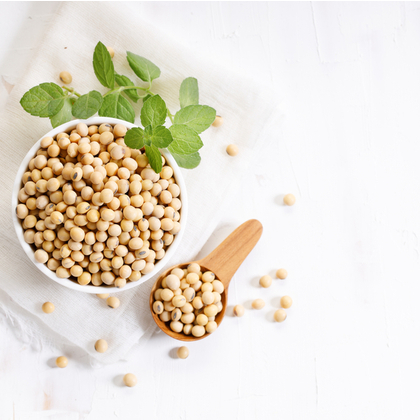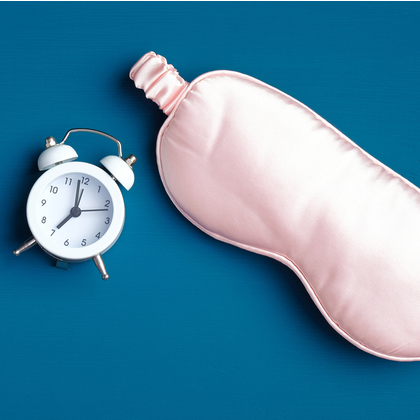
Hot flushes are considered by many to be the most troublesome and commonly recognised symptom of menopause. One study reported that up to four out of five menopausal women experience hot flushes (1).
As well as being uncomfortable, hot flushes can be stressful and frustrating, and can also cause associated problems with sleep, fatigue, and hydration. This can affect your overall wellbeing and quality of life, impacting work duties, social commitments, and self-confidence. In 2016, researchers revealed that three-quarters of menopausal women struggled with the mental and physical demands of their workplace due to symptoms such as hot flushes (2).
While there is no cure for hot flushes, it is helpful to understand why and how they happen, so that you can better manage your symptoms.
What’s the difference between hot flush and hot flash?
Both hot flush and hot flash are terms used interchangeably that mean the same thing. Hot flush is the term preferred in the UK, while hot flash is used in North America.
What is happening to your body when you have a hot flush?
When you have a hot flush, you experience a sudden feeling of warmth radiating throughout your body, most commonly affecting your face, neck, and chest (3). This sensation is often accompanied by redness (flushing), excessive sweating, nausea, dizziness, a racing heart, shaking, headaches, and, in some cases, feelings of anxiety (4).
 Once the hot flush dissipates, it’s not uncommon to feel cold and clammy or to start shivering. These sensations arise due to the sweat evaporating from your body.
Once the hot flush dissipates, it’s not uncommon to feel cold and clammy or to start shivering. These sensations arise due to the sweat evaporating from your body.
You may also experience hot flushes while you sleep, otherwise known as night sweats. These episodes can rouse you from sleep and make it challenging to get a quality night’s rest, leaving you fatigued the next day (5).
What causes menopausal hot flushes?
Low oestrogen
Though the exact cause of hot flushes is unclear, scientists suggest that the fall in oestrogen, which characterises the menopausal transition, may contribute to the development of vasomotor (blood vessel) symptoms, like hot flushes and night sweats (6).
A growing body of evidence suggests that low oestrogen can increase levels of another hormone called norepinephrine, which would then cause hot flushes (7). Norepinephrine helps to regulate your body’s core temperature, and an increase of it, therefore, may lead to excessive sweating and flushing (8).
However, it’s also thought that the decline in oestrogen may disrupt your hypothalamus — a gland in your brain that regulates core temperature (9). Low oestrogen levels signal to the hypothalamus that your body is overheating. The brain responds by cooling you down, making your heart pump faster, opening your sweat glands, and dilating blood vessels near the surface of your skin to release heat. Together, these biological processes produce the surge of heat that characterise a hot flush.
Other factors
Aside from hormonal fluctuations, individual behaviours can also trigger or exacerbate hot flushes, such as (10):
-
Eating spicy foods
-
Drinking caffeinated beverages
-
Alcohol consumption
-
Feeling anxious
-
Sitting outside on a hot day
-
Wearing too many layers
-
Smoking or being exposed to cigarette smoke
Sometimes, it can help to keep a diary to track your symptoms. Make a note of what you were eating, drinking, feeling, doing, and wearing at the beginning of each episode. That way, you may be able to discern a pattern and avoid specific triggers.
How long do menopausal hot flushes last?
According to the British Menopause Society, hot flushes are most commonly experienced around one year after menopause, when you have officially stopped menstruating (11). However, it’s estimated that approximately 35%-50% of women will suffer from hot flushes and night sweats during perimenopause, which is the period of time in which your body naturally transitions towards the menopause (12).
Most menopausal women will experience hot flushes for between six months and two years. However, this topic is the subject of debate among researchers (8). In one study, researchers revealed that the median duration of moderate to severe hot flushes was 10.2 years (13).
The experience of a hot flush differs between women. For example, you may experience hot flushes every hour or have just a few per week. Generally speaking, hot flushes last for 1-5 minutes, with some persisting for as long as an hour (14).
Learn more about menopausal symptoms, treatments, and more via our educational Menopause hub.
References:
-
Avis N. et al., Duration of Menopausal Vasomotor Symptoms Over the Menopause Transition. JAMA Internal Medicine. 2015;175(4):531.
-
Geukes M. et al., The impact of menopause on work ability in symptomatic women with severe menopausal symptoms. JAMA Maturitas. 2017;100:101.
-
Kronenberg F. Menopausal Hot Flashes: A Review of Physiology and Biosociocultural Perspective on Methods of Assessment. The Journal of Nutrition. 1985;1380S-1385S.
-
Feldman. B, Voda. A, Gronseth. E. The prevalence of hot flash and associated variables among perimenopausal women. Research in Nursing & Health. 1985;8(3):261-268.
-
Kravitz H. et al., Sleep difficulty in women at midlife: a community survey of sleep and the menopausal transition. Menopause. 2003;10(1):19-28.
-
Freedman R. Menopausal hot flashes: Mechanisms, endocrinology, treatment. The Journal of Steroid Biochemistry and Molecular Biology. 2014;142:115-120.
-
Freedman R. Biochemical, metabolic, and vascular mechanisms in menopausal hot flashes. Fertility and Sterility. 1998;70(2):332-337.
-
Freedman R. Menopausal hot flashes: Mechanisms, endocrinology, treatment. The Journal of Steroid Biochemistry and Molecular Biology. 2014;142:115-120.
-
Healthtalk.org. 2020. Menopause - Hot Flushes And Sweats. Available online: https://healthtalk.org/menopause/hot-flushes-and-sweats
-
British Menopause Society. 2020. How Long Do Flushes Go On? Available online: https://thebms.org.uk/2011/05/how-long-do-flushes-go-on/
-
Publishing, H., 2020. Perimenopause: Rocky Road To Menopause - Harvard Health. Available online: https://www.health.harvard.edu/womens-health/perimenopause-rocky-road-to-menopause
-
Freeman E. et al., Duration of Menopausal Hot Flushes and Associated Risk Factors. Obstetrics & Gynecology. 2011;117(5):1095-1104.
-
Kronenberg F. Hot Flashes: Epidemiology and Physiologya. Annals of the New York Academy of Sciences. 1990;592(1):52-86.
Disclaimer: The information presented by Nature's Best is for informational purposes only. It is based on scientific studies (human, animal, or in vitro), clinical experience, or traditional usage as cited in each article. The results reported may not necessarily occur in all individuals. Self-treatment is not recommended for life-threatening conditions that require medical treatment under a doctor's care. For many of the conditions discussed, treatment with prescription or over the counter medication is also available. Consult your doctor, practitioner, and/or pharmacist for any health problem and before using any supplements or before making any changes in prescribed medications.
Related Posts

Olivia
Olivia Salter has always been an avid health nut. After graduating from the University of Bristol, she began working for a nutritional consultancy where she discovered her passion for all things wellness-related. There, she executed much of the company’s content marketing strategy and found her niche in health writing, publishing articles in Women’s Health, Mind Body Green, Thrive and Psychologies.
View More



